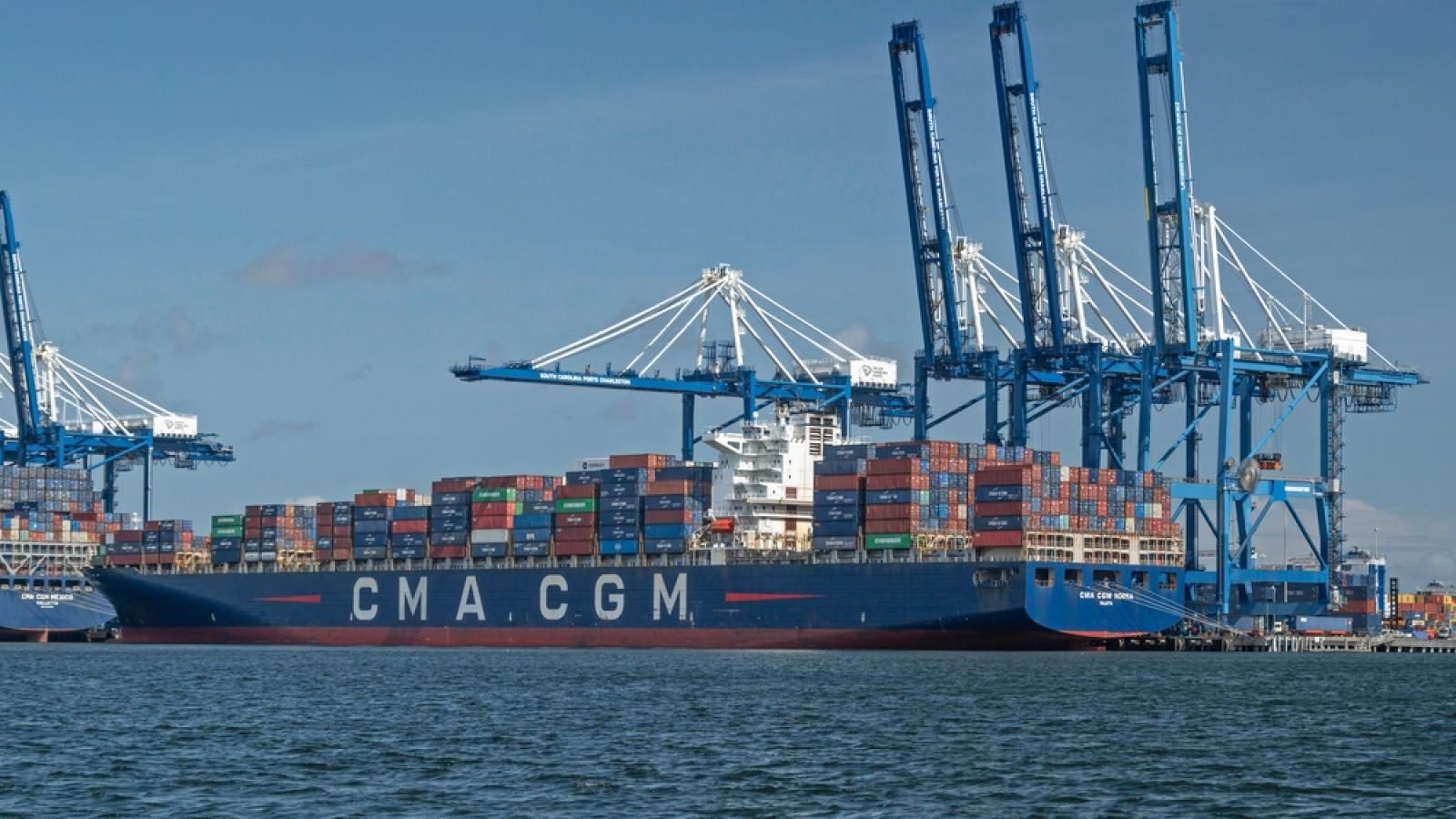The Wando Inbound Camera is a practical digital tool offered by the South Carolina Ports Authority (SC Ports) to provide visual access to inbound lanes at the Wando Welch Terminal. Whether you’re a truck driver aiming to avoid long queues, a logistics planner managing freight schedules, or simply someone interested in terminal operations, this camera feed offers reliable, near-real-time insights into gate activity. This guide provides an in-depth explanation of the Wando inbound camera, including its purpose, location, operational details, and access methods, along with its significance in modern port logistics.
Introduction to the Wando Inbound Camera
The Wando inbound camera serves as a visual monitoring solution for inbound traffic approaching the Wando Welch Terminal in Mount Pleasant, South Carolina. It is designed primarily for commercial drivers, dispatchers, and logistics companies to monitor the status of truck lines and anticipate gate processing times. These visuals help in reducing congestion, improving time management, and enhancing the overall efficiency of port operations.
This tool is part of SC Ports’ broader digital infrastructure aimed at modernizing how stakeholders interact with port terminals. Installed at key gate entry points, the camera feeds display still images updated approximately every 30 seconds, giving viewers a close-to-real-time look at lane conditions.
Terminal Location and Infrastructure Overview
The Wando Welch Terminal is one of the busiest and most technologically advanced port facilities on the U.S. East Coast. Located on Long Point Road in Mount Pleasant, it serves as a major hub for containerized cargo, with connections to both international shipping lanes and inland destinations.
The inbound cameras are strategically positioned at the main truck entrance gates:
- Main Gate Inbound Camera
- Shipping Lane Inbound Camera
These cameras cover the primary lanes where commercial trucks arrive to pick up or drop off containers. Their visual angle captures the flow of traffic, the length of truck queues, and the operational readiness of the gates.
Here’s a quick look at the camera setup:
| Camera Name | Location Coverage | Image Refresh Rate | Viewer Access |
|---|---|---|---|
| Main Gate Inbound | Primary truck entry gate | ~30 seconds per update | Public via SCSPA |
| Shipping Lane Inbound | Secondary lane for truck flow | ~30 seconds per update | Public via SCSPA |
Operational Features and How It Works
The Wando inbound camera is not a live-streaming video but rather a series of high-quality still images that refresh roughly every 30 seconds. This setup reduces bandwidth requirements while still providing valuable near-live visuals.
These images show:
- The number of trucks waiting in line
- Open or closed status of entry gates
- Weather or environmental conditions impacting visibility or access
- Flow speed of the truck queue
Though not live video, the refresh rate is fast enough for drivers and logistics professionals to make timely decisions about whether to proceed to the terminal or wait.
For instance, if a trucking company notices from the Wando inbound camera that congestion is building up, they can delay a truck’s departure by an hour or reroute it to another terminal if applicable.
Accessing the Wando Inbound Camera Feed
Accessing the Wando inbound camera is simple and doesn’t require any special login credentials. The SC Ports Authority offers direct public access through their website:
- Go to the SC Ports Authority website (www.scspa.com)
- Navigate to the Wando Welch Terminal section
- Look for “Inbound Lane Cameras” or “Gate Cam”
- Click on the camera image to view the most recent snapshot
Additionally, several third-party logistics news and shipping tracker sites like TGAL.us also embed or mirror the camera feed for easier viewing. However, the most reliable and up-to-date version remains the one hosted by SC Ports themselves.
Value and Use Cases for the Wando Inbound Camera
The Wando inbound camera plays a critical role in day-to-day operations at the Wando Welch Terminal. Below are key examples of how it helps different user groups:
1. Truck Drivers
Drivers can visually confirm whether lanes are backed up or flowing smoothly. This minimizes time wasted in idling traffic and improves turnaround times.
2. Dispatchers and Logistics Coordinators
Companies overseeing fleet management use the camera to decide when to send trucks into the terminal. They can anticipate delays or reroute vehicles if congestion appears severe.
3. Port Operations Teams
Port personnel can monitor how efficiently gates are processing trucks and make real-time adjustments to staffing or lane assignments as needed.
4. General Stakeholders
Anyone interested in the terminal’s real-time performance, including customs officials or supply chain analysts, can reference the camera for a visual snapshot of current conditions.
History and Technical Upgrades
The Wando inbound camera system was first launched around August 2016 as part of SC Ports’ wider efforts to modernize port access through the Advanced Gate System (AGS). Since then, the cameras have undergone multiple upgrades, including better image resolution, more frequent refresh intervals, and mobile-friendly interfaces.
The AGS initiative included RFID tags for truck identification, automated gate processing, and a digital appointment system—all of which work in sync with camera systems to streamline port entry and reduce congestion.
Over the years, the Wando Welch Terminal has continued to be a pilot site for SC Ports’ innovation, and the inbound camera plays a foundational role in providing visibility into the success of these technologies.
Best Practices for Using the Camera Feed
To get the most accurate and timely information from the Wando inbound camera, users should:
- Refresh the browser manually if auto-refresh lags
- Check both the Main Gate and Shipping Lane views for a complete picture
- Use it in combination with SC Ports’ truck turn-time dashboard or vessel schedules
- Avoid relying on third-party reposts if real-time accuracy is critical
If you are accessing the feed on mobile, ensure your browser settings allow for image reloads, especially when using limited data connections.
Future Enhancements and Digital Outlook
SC Ports has hinted at future improvements to its digital infrastructure, which may include:
- Live video streaming of inbound lanes
- Integration with AI-based traffic analysis
- App-based alerts for truckers based on live camera data
Such upgrades would transform the Wando inbound camera from a passive visual tool to an interactive system that could notify drivers or dispatchers of real-time congestion or lane changes.
Conclusion
The Wando inbound camera is more than just a simple feed—it’s a smart tool built into the fabric of one of America’s most efficient port systems. It empowers truckers, logistics managers, and port staff to operate with greater precision and less guesswork. By offering a real-time visual of inbound lanes, the camera helps reduce congestion, improve time management, and support the smooth functioning of maritime trade operations.
As SC Ports continues to lead in port modernization, the Wando inbound camera will remain a key part of how business is done—digitally, transparently, and efficiently.
Other Articles
The Best Camera Phones of 2024 Lumolog
The Precinct 3rd Person Camera Mod
Are Bolide or Verkada Cameras Better?
NOVAtime Utah Tech: A Complete Guide to Timekeeping and Workforce Management














Leave a Reply